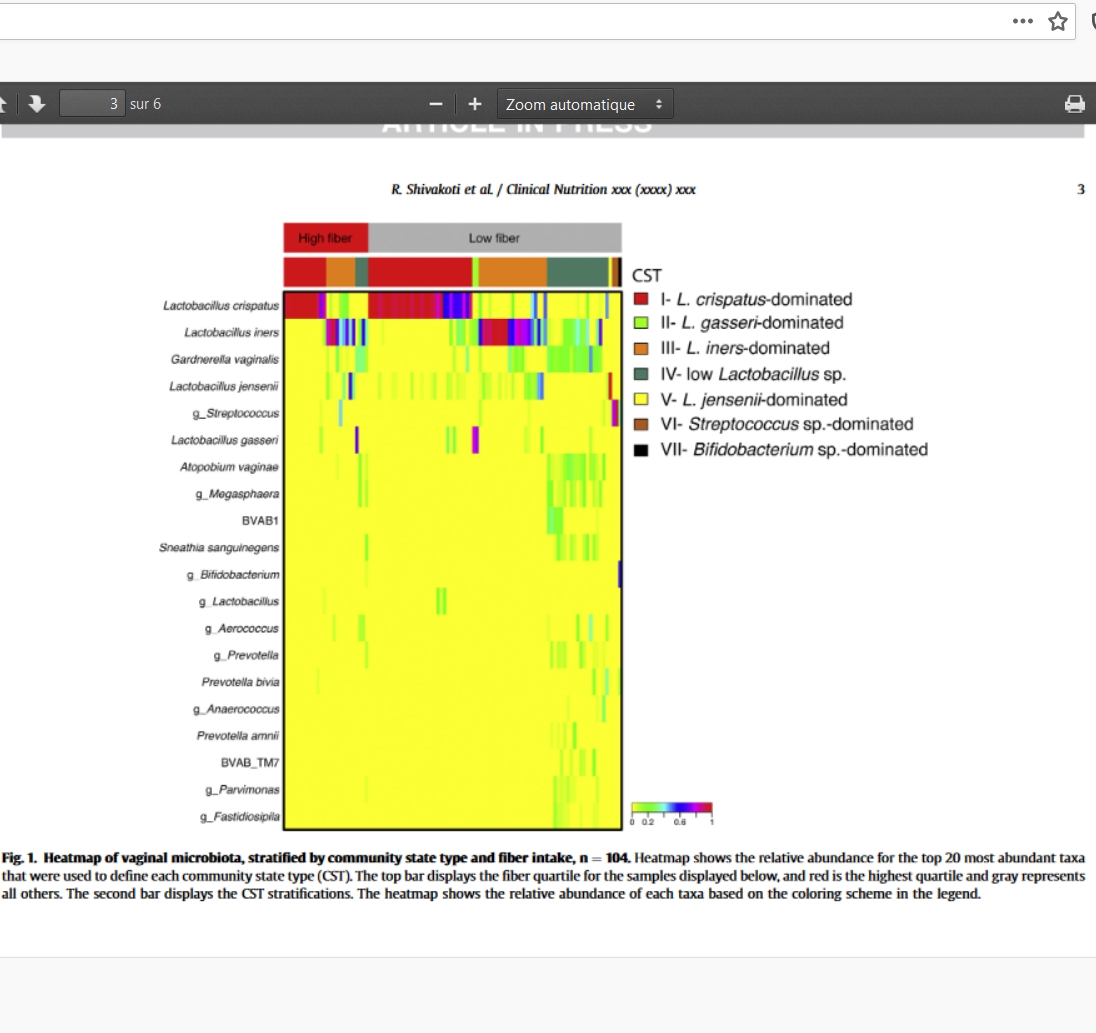Dietary macronutrient intake and molecular-bacterial vaginosis: Role of fiber
Rupak Shivakoti Clinical Nutrition Volume 39, Issue 10, October 2020, Pages 3066-3071
Background & aims
Women with bacterial vaginosis (BV) have increased risk of sexually transmitted infections and other adverse health outcomes. Based on the composition of their vaginal microbiota, women can broadly be classified into low-Lactobacillus (termed molecular-BV) and Lactobacillus-dominated profiles. Our objective was to determine the association between dietary macronutrient intake and molecular-BV.
Methods
In a cross-sectional study of 104 reproductive-age women, dietary intake data were obtained using the Block Brief 2000 food frequency questionnaire. Vaginal microbiota composition was characterized by sequencing amplicons of the 16S rRNA gene V3–V4 regions and clustering into community state types (CST). Logistic regression was used to determine the association of macronutrient intake with molecular-BV (low-Lactobacillus vs. Lactobacillus-dominated CSTs combined).
Results
Participants had a median age of 25.9 (interquartile range: 21.9–29.6), 58% were white (30% black), 51% overweight/obese and 52% on hormonal contraception. In multivariable models, diets richer in fiber were inversely associated with molecular-BV (adjusted odds ratio: 0.49 per standard deviation increase in energy-adjusted fiber intake, 95% confidence interval: 0.24–0.99; p = 0.049).
Conclusions
Our results indicate that diets richer in fiber were associated with lower odds of molecular-BV. Further studies are needed to confirm these findings and to test whether increasing fiber intake can modulate the microbiota towards a more optimal Lactobacillus-dominant profile.














